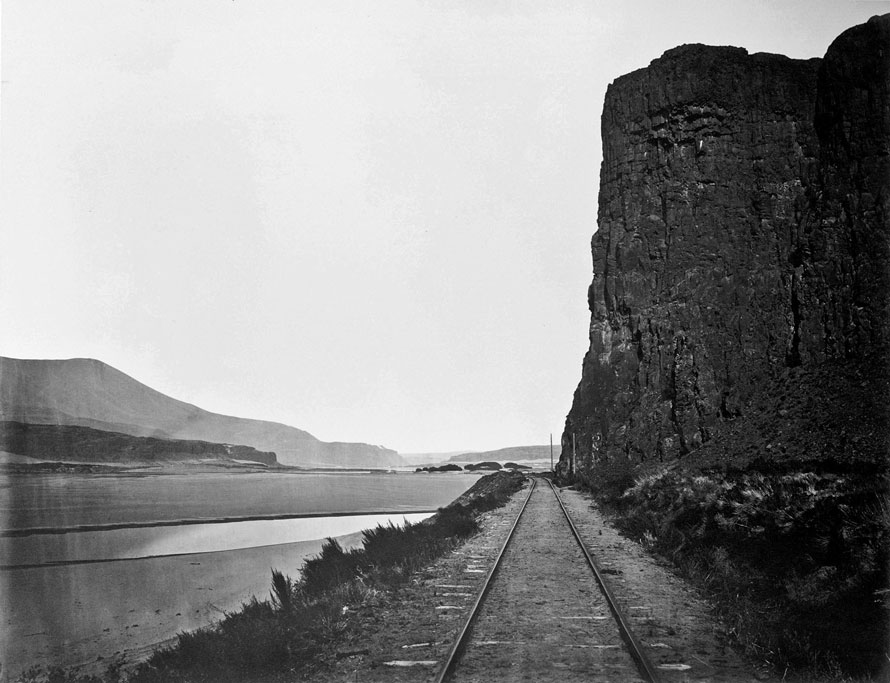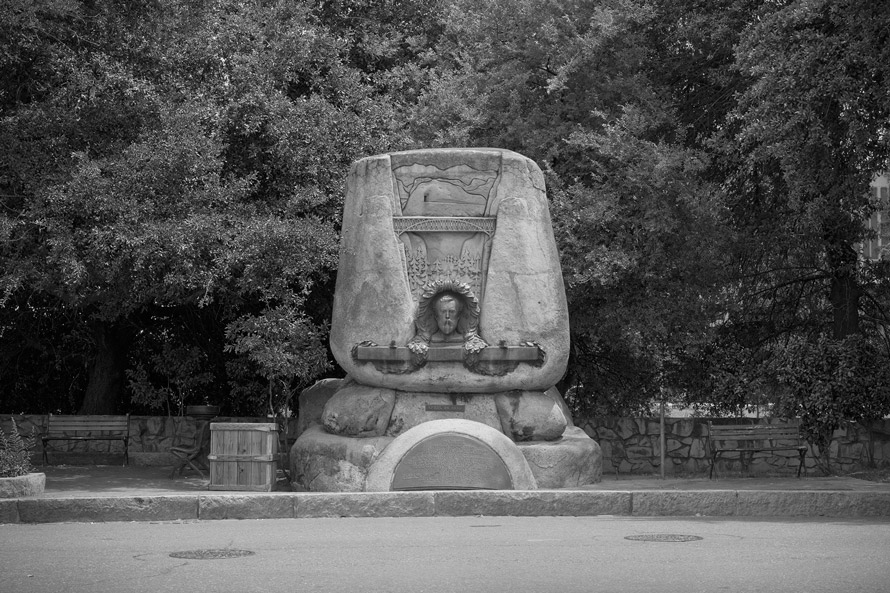
Cape Horn near Celilo, Columbia River, 1867
Oregon Historical Society
After Promontory: One Hundred and Fifty Years of Transcontinental Railroading was put together by the Center for Railroad Photography & Art and published by Indiana University Press. With the sesquicentennial of the Golden Spike looming, the creators of this book chose this time to look back not only at the Pacific Railroad, but also the subsequent transcontinental railroads, and the myriad ramifications of the industry, writ large, since Stanford wielded the maul on May 10th 1869 at Promontory Summit.
After Promontory begins with a forward by Robert D. Krebs, former Chairman, President, and CEO for BNSF Railway, which lays out the structure of the book, followed by an introduction by H. Roger Grant, historian at Clemson University. Grant provides us with a concise history leading up to the first transcontinental road, later known as the Overland Route, including Asa Whitney’s dream as well as the concrete, and prescient, results of the Pacific Railroad Surveys of 1853. He pivots nicely to how photography functioned as a marketing tool for all of the eventual railroads that made it deep into the West. Established railroad historians Keith L. Bryant, Don L. Hofsommer, and Maury Klein provide the book’s major essays—the reader may recognize these names from their own dog-eared histories of the Atchison, Topeka and Santa Fe Railway, the Southern Pacific Railroad, and the Union Pacific Railroad respectively. Drake Hokanson, a photographer/writer who has covered the original route of the first transcontinental railroad extensively, penned the final essay, with a focus on the symbiotic relationship of railroads and photography in the 19th century, and he supplied many images as well. Peter A. Hansen, steward of the journal Railroad History, performed editing duties. (It should be noted that I contributed nine photographs to this volume—five large plates and four small illustrative vignettes.)
Read more